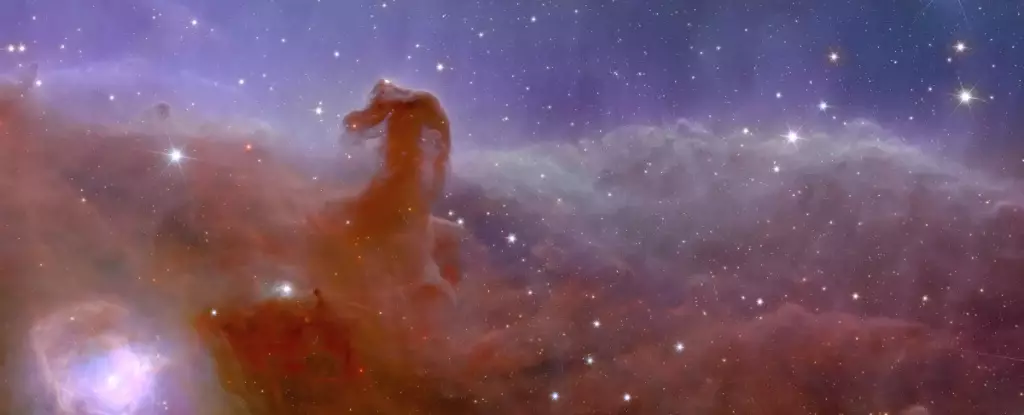Europe’s Euclid space telescope has recently released its first images, showcasing its unique ability to capture a wide range of objects in the Universe. From a well-known nebula to never-before-seen galaxies billions of light years away, these images provide a glimpse into the diversity and beauty of the cosmos.
A Close Encounter with the Horsehead Nebula
One of the remarkable images captured by Euclid is the Horsehead Nebula, also known as Barnard 33. Located 1,375 light years away, this nebula appears as a giant red horse sticking its head out against a backdrop of swirling stars. The horse’s head is actually dark clouds in front of ultraviolet radiation emitted by the eastern star on the belt of the Orion constellation. Euclid’s wide lens allows for a complete view of the Horsehead Nebula in just an hour, providing scientists with unprecedented observations. This includes the potential discovery of Jupiter-sized planets and stars still in their infancy in this stellar nursery.
Unveiling the Secrets of Globular Star Clusters
Euclid’s observations also extend to globular star clusters within our Milky Way galaxy. A particular cluster, located 7,800 light years away, presents a unique opportunity for Euclid to distinguish its faint stellar members from other celestial sources. This capability allows scientists to study the dynamics of globular clusters, including the phenomena of stars trailing behind them. The absence of visible star trails has led to the hypothesis that dark matter may be present, holding the stars together. Euclid’s mission holds the promise of shedding more light on the mysteries of dark matter and dark energy, which constitute the majority of the Universe’s composition.
Not all galaxies take the familiar form of spirals seen in our own Milky Way. Euclid’s images delve into the irregular dwarf galaxy NGC 6822, located 1.6 million light years away from Earth. While previous telescopes, such as the James Webb Space Telescope, have captured glimpses of this galaxy, Euclid is the first to portray it as a whole in just an hour. NGC 6822’s stars have low metallicity, offering scientists valuable insights into the evolution of galaxies in the early Universe.
Unveiling the “Hidden Galaxy”
The spiral galaxy IC 342 has earned the nickname the “hidden galaxy” due to its difficulty in detecting behind the disc of our Milky Way. However, Euclid’s infrared vision enables the telescope to penetrate the dust and detect previously unseen globular clusters. IC 342, located approximately 11 million light years away, presents astronomers with a revolutionary image, revealing hidden features that were once concealed from us.
One of Euclid’s most awe-inspiring images is that of the Perseus Cluster. Situated 240 million light years away, this cluster contains a thousand galaxies. However, the true marvel lies in the background, where over 100,000 additional galaxies, some 10 billion light years away, become visible. Euclid’s observation unveils galaxies that have never been spotted before, opening up new avenues for exploration and understanding. Intriguingly, low-level light detected in the image suggested the presence of stars resulting from collisions between galaxies. The fact that these stars were not being pulled back into the galaxies may indicate the presence of dark matter. Further research is needed to confirm this hypothesis and provide a deeper understanding of dark matter’s distribution throughout the Universe.
Europe’s Euclid space telescope has showcased its groundbreaking capabilities through its first released images. From the Horsehead Nebula to distant galaxies, Euclid’s wide-lens view of the Universe offers scientists a unique perspective on the diversity, colors, and shapes found within the cosmos. With its mission aimed at unraveling the mysteries of dark matter and dark energy, Euclid is poised to contribute significantly to our understanding of the Universe and its hidden wonders.



Leave a Reply